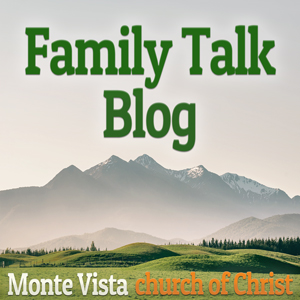When Peter confessed his belief that Jesus was the Son of God, Jesus declared that He would build His church, and taught, “That He must go to Jerusalem, and suffer many things from the elders and chief priests and scribes, and be killed, and be raised up on the third day” (Matthew 16:21). We reviewed His arrest, trial, death, and burial. We considered the results of Jesus’ resurrection on the Family Talk Blog, in an article called “What Are The Results Of The Resurrection?”. But how did His rising from the dead fit into God’s eternal plans? Why did the Jews not expect it? Let us look at His resurrection and the preparations for the beginning of His ekklēsia, the church.
David understood that the spirit of the dead would go to a place called Sheol, the abode of the dead, and a “place of no return.” He knew that his son could not come back from there, but that he would go there when he died. He said, “I will go to him, but he will not return to me.” (2 Samuel 12:22-23). The messianic prophecy that came through David, however, says that Immanuel would return. “For You will not abandon my soul to Sheol; Nor will You allow Your Holy One to undergo decay” (Psalms 16:10). The sisters of Lazareth knew their brother was decaying because he had been in the tomb for four days (John 11:39). Jesus was in the tomb between 36 and 40 hours, not long enough for decay to begin. Jesus entered Sheol with no bones broken (John 19:36), and came out without any decay (Acts 2:31).
Mark 15:46 records that Joseph “rolled a stone against the entrance of the tomb.” However, on the First Day of the Week, the third day in the tomb, as the Jews counted days, “A severe earthquake had occurred, for an angel of the Lord descended from heaven and came and rolled away the stone and sat upon it” (Matthew 28:2). When the women went to the tomb to complete the preparations of the body for burial, the angel said to them, “He is not here, for He has risen, just as He said. Come, see the place where He was lying” (Matthew 28:6). The testimony of the angel “He has risen” is the primary proof that the gospel is from God. It was to be told to His brethren (Matthew 28:10), and Paul told Timothy never to forget, “Remember Jesus Christ, risen from the dead, descendant of David, according to my gospel” (2 Timothy 2:8).
The empty tomb is proof that Jesus rose. The angel told the women, “Come, see the place where He was lying. Go quickly and tell His disciples” (Matthew 28:6-7). The record by John of the tomb is most informative. John went to the tomb, “And looking in, saw the linen wrappings lying there; but he did not go in. And so Simon Peter also came, following him, and entered the tomb; and he saw the linen wrappings lying there, and the face-cloth which had been on His head, not lying with the linen wrappings, but rolled up in a place by itself” (John 20:3-8). It is the description of a bedroom where an individual woke up, “made the bed,” and departed the room. Jesus had said, “I lay down My life so that I may take it again. No one has taken it away from Me, but I lay it down on My own initiative. I have authority to lay it down, and I have authority to take it up again. This commandment I received from My Father”(John 10:17-18). Jesus came forth, fully alive, from Sheol and the tomb!
Part of God’s plan to save sinful humans and provide an eternal home for them included a place of waiting between this life and the next. Called Sheol in Hebrew and Hades in Greek, this place is known only as the place spirits go when they depart the body. The question asked by the prophets was, “Is it possible to escape from Sheol?” To Hosea, God said, “Shall I ransom them from the power of Sheol? Shall I redeem them from death? O death, where are your thorns? O Sheol, where is your sting?” (Hosea 13:14). To some, there would be no redemption, no eternal home prepared. But to the children of God, He would redeem them from this place to live with Him forever. To demonstrate fulfillment of the prophecy to Eve, that Christ would bruise the head of Satan, Jesus entered Sheol and returned about 36 hours later. In coming out of Sheol, He proved He had conquered both Satan and the power of death to hold its captives. Through Isaiah came these words. “Your dead will live; Their corpses will rise. You who lie in the dust, awake and shout for joy” (Isaiah 26:19). And Paul wrote, “Now Christ has been raised from the dead, the first fruits of those who are asleep. For since by a man came death, by a man also came the resurrection of the dead” (1 Corinthians 15:20-21). Paul states the conclusion this way. “Thanks be to God, who gives us the victory through our Lord Jesus Christ” (1 Corinthians 15:57). And “In all these things we overwhelmingly conquer through Him who loved us” (Romans 8:37).
Have you been raised with Christ from the waters of baptism?
